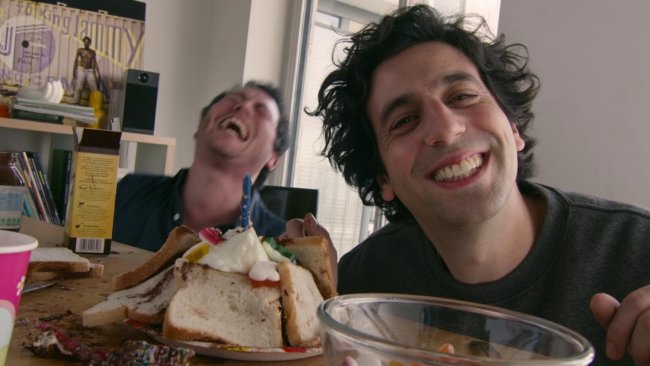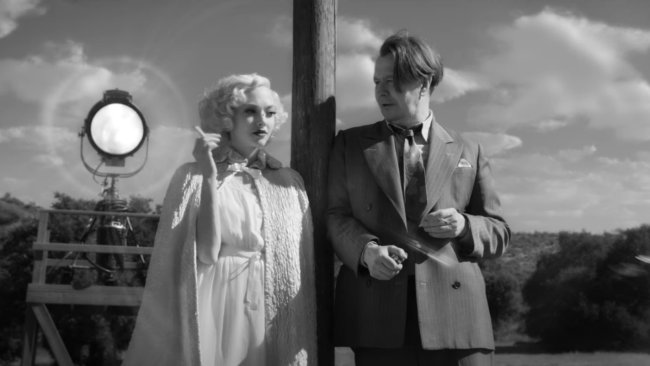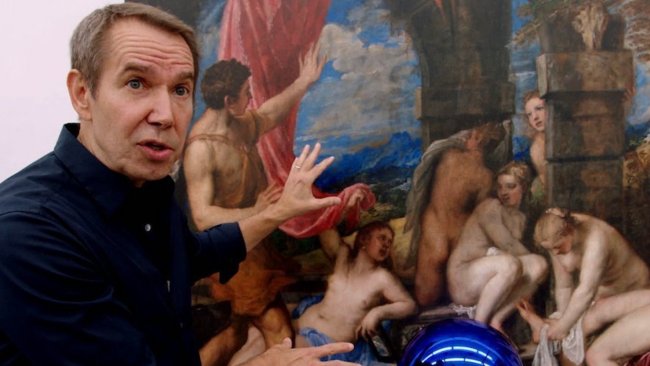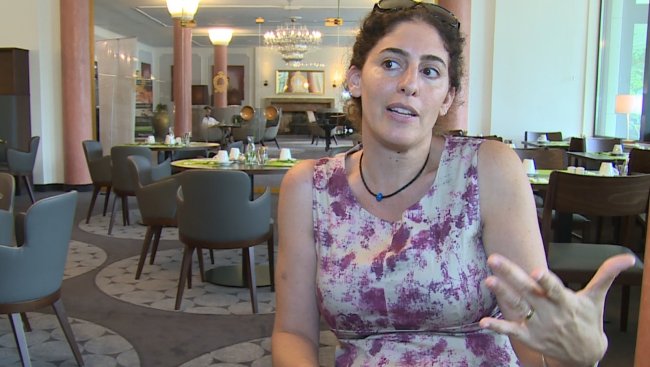La casa lobo
[…] We could say that this filmic language makes the film and its making-of conflate, insofar as we constantly see the construction of the image: the paintings and the act of painting, the puppets and their moulding, the representations and their material support. They live together in a perfect continuity.
[…] Maria’s story and destiny literally coincide with the walls of the house, and this finally blurs the distinction between the inside and the outside.
[…] The struggle between Maria and the wolf reveals itself to be a struggle of identity, between Germany and Chile, between the delusions of fascism and the mirages of freedom.
Text: Giuseppe Di Salvatore
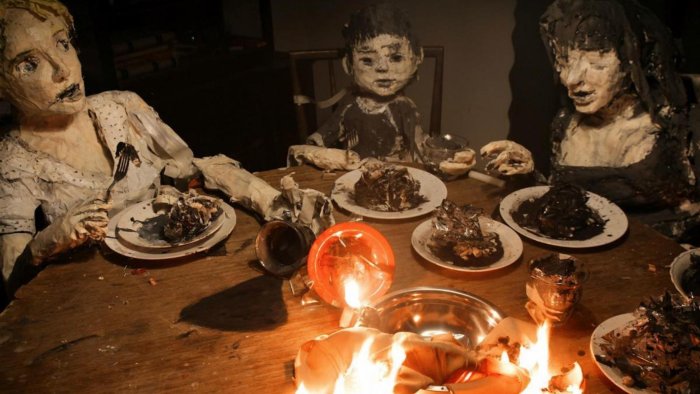
If the technique of stop motion animation gives us the impression of facing a sort of analysis of movement, in La casa lobo Joaquín Cociña and Cristóbal León intensify this impression up to avoiding the illusion of movement and making clearly visible the moments of transformation that constitute the backbones of movement. The animated evolution within and with the rooms of the house is nothing but the anatomy of transformation itself, thereby creating an atmosphere of suspense and the feeling of seeing too much – analogous with the idea that looking at the pixels of a screen would mean seeing too much of the image on said screen. More precisely, we could say that this filmic language makes the film and its making-of conflate, insofar as we constantly see the construction of the image: the paintings and the act of painting, the puppets and their moulding, the representations and their material support. They live together in a perfect continuity.
I start speaking about the experience we have of the peculiar filmic language of La casa lobo not only because this language grabs our attention, but also because the experience we have of it is particularly coherent with the story Cociña and León tell. The feeling of suspense fits Maria’s self-exclusion in the house hidden in the forest; and the play between the illusive – pictorial – and the material – sculptural – sides of the image fits Maria’s oscillation between the reality of surviving alone with two little pigs in the house, and her (and the film’s) unbridled power of imagination. Here an important leitmotiv emerges: deviation and freedom, or deviation as freedom. As the images generate through a permanent drift, Maria creates her world after her escaping the German colony she lives in, in Chile. There, she would have been punished for her deviancy, departing the strict rules of the autarchic colony. She hides in the forest in search of freedom – even if with this gesture she continues the autarchic spirit of the colony…
Deviation and freedom manifest themselves not only with regard to the traditions of the colony, but also to the tradition of the fairy tales. Little Red Riding Hood and The Three Little Pigs are freely subverted, becoming nothing more than references to the fundamental counter-protagonist of the story, the wolf. We never see it, for it remains always outside the house, and the film claustrophobically remains within the walls of the house. Nevertheless, it is present as voice over, through which we understand how it observes and perceives at – and, in a sense, looks after – Maria’s construction of an independent happy life in the house. Maria’s story and destiny literally coincide with the walls of the house, and this finally blurs the distinction between the inside and the outside. At one point, the wolf says that it has always been within the house and within her; perhaps the house has always been its own house.
The film starts with some archive footage of a real colony of German people in Chile and with what will be the wolf’s voice (over) describing the story of the colony and trying to defend it. The head of this colony is no other but Paul Schaeffer, a former Nazi official who has moved to Chile, where he became a torturer working for Pinochet, as well as a pedophile. Cociña and León put Maria’s story of deviation and freedom within the context and the perspective of this kind of wolf, which represents the darkest side of Chilean history. This assumption of perspective is highly disturbing and gives Maria’s adventure a heroic and desperate flavour. Her taking care of two little pigs, her transforming them into children, and her finally being attacked by them, describe a hopeless parabola, where the chance of living in a new house and the creation of a new world finally succumb under the evil pressure of the Heimat with its illiberal rules and the illusion of security. This centripetal force of traditionalism assumes a lyric and sinister tonality through the use of Wagnerian motives (by the way, they are only one element in the rich and wonderfully composed soundscape of the film – by Claudio Vargas), and is expressed through the voices speaking Spanish with a strong German accent, and often switching to German. The struggle between Maria and the wolf reveals itself to be a struggle of identity, between Germany and Chile, between the delusions of fascism and the mirages of freedom.
Unsettling, visionary, hypnotizing, La casa lobo is one of the strongest filmic experiences of the year.
This article contains a third-party video. If you would like to watch the video, please adjust your settings.
Info
La casa lobo | Film | Joaquín Cociña, Cristóbal León | CHL 2018 | 75’ | Festival Fantoche Baden 2018, Festival Animatou Genève 2018
First published: September 10, 2018
